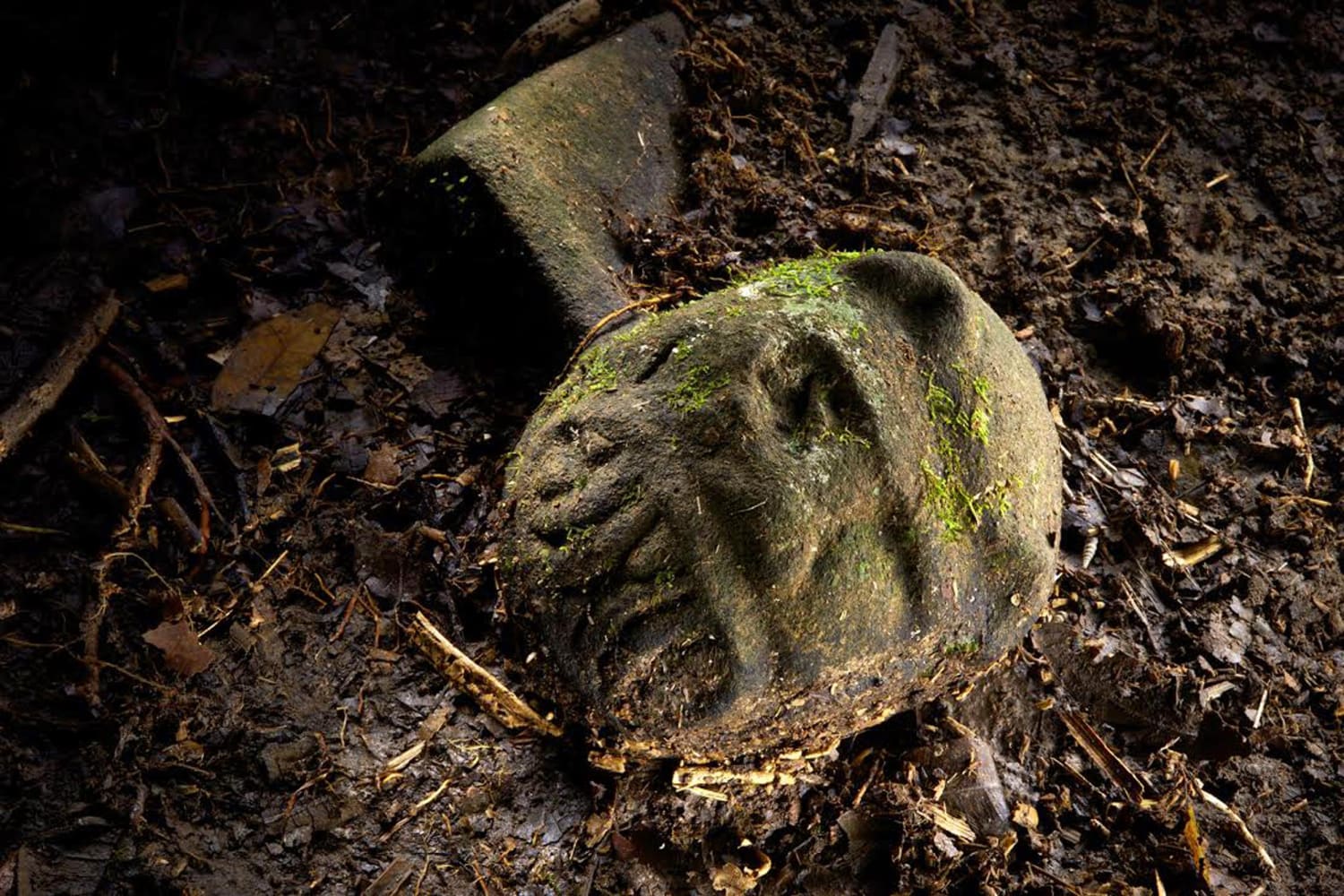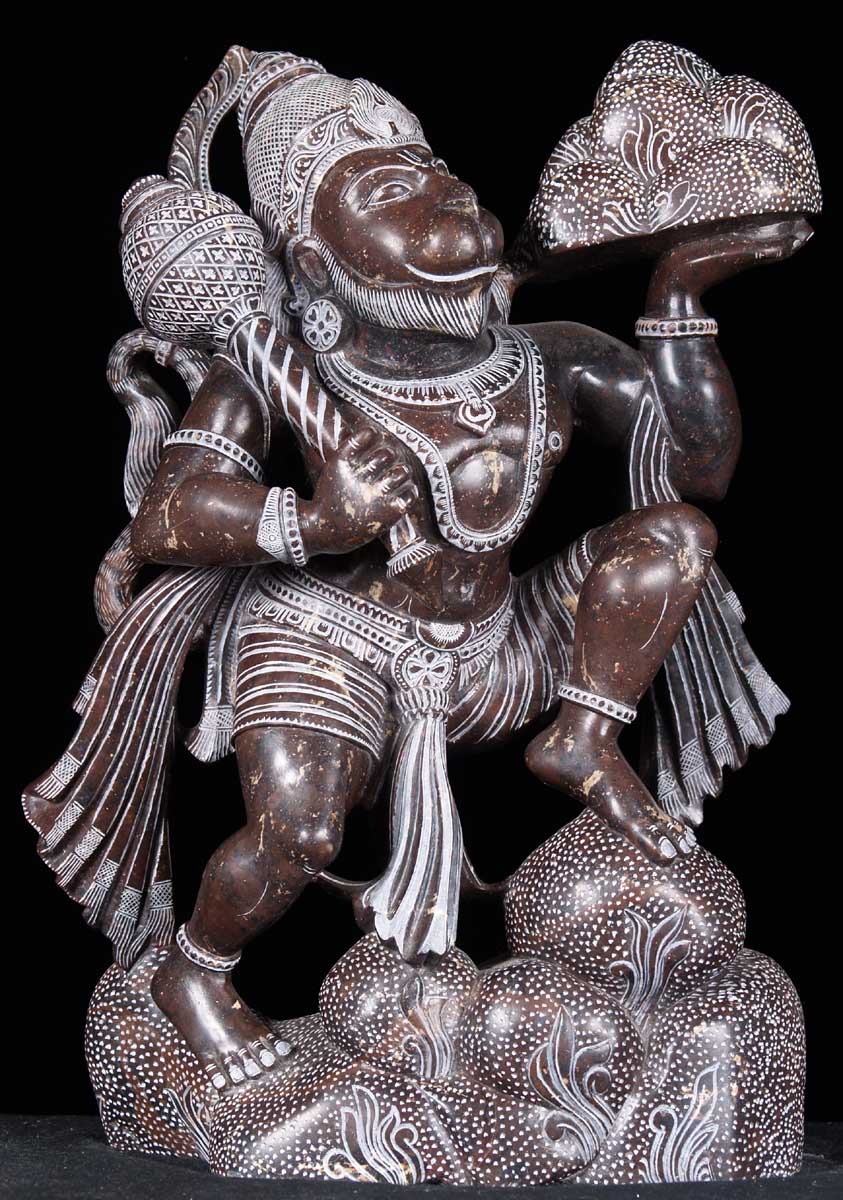Archaeological team say they have set foot in a place untouched by humans for at least 600 years in a site that may be the ‘lost city of the monkey god’
Archaeologists have discovered two lost cities in the deep jungle of Honduras, emerging from the forest with evidence of a pyramid, plazas and artifacts that include the effigy of a half-human, half-jaguar spirit.
The team of specialists in archaeology and other fields, escorted by three British bushwhacking guides and a detail of Honduran special forces, explored on foot a remote valley of La Mosquitia where an aerial survey had found signs of ruins in 2012.
Chris Fisher, the lead US archaeologist on the team, told the Guardian that the expedition – co-coordinated by the film-makers Bill Benenson and Steve Elkins, Honduras and National Geographic (which first reported the story on its site) – had by all appearances set foot in a place that had gone untouched by humans for at least 600 years.
“Even the animals acted as if they’ve never seen people,” Fisher said. “Spider monkeys are all over place, and they’d follow us around and throw food at us and hoot and holler and do their thing.”
“To be treated not as a predator but as another primate in their space was for me the most amazing thing about this whole trip,” he said.
Fisher and the team arrived by helicopter to “groundtruth” the data revealed by surveying technology called Lidar, which projects a grid of infrared beams powerful enough to break through the dense forest canopy.
That data showed a human-created landscape, Fisher said of sister cities not only with houses, plazas and structures, but also features “much like an English garden, with orchards and house gardens, fields of crops, and roads and paths.”
In the rainforest valley, they said they found stone structural foundations of two cities that mirrored people’s thinking of the Maya region, though these were not Mayan people. The area dates between 1000AD and 1400AD, and while very little is known without excavation of the site and surrounding region, Fisher said it was likely that European diseases had at least in part contributed to the culture’s disappearance. He also said it’s unclear whether the people could be related to the region’s indigenous communities who still live in the area.
The expedition also found and documented 52 artifacts that Virgilio Paredes, head of Honduras’s national anthropology and history institute, said indicated a civilisation distinct from the Mayans. Those artifacts included a bowl with an intricate carvings and semi-buried stone sculptures, including several that merged human and animal characteristics.
The cache of artifacts – “very beautiful, very fantastic,” in Fisher’s words – may have been a burial offering, he said, noting the effigies of spirit animals such as vultures and serpents.
Fisher said that while an archaeologist would likely not call these cities evidence of a lost civilisation, he would call it evidence of a culture or society. “Is it lost? Well, we don’t know anything about it,” he said.
The exploratory team did not have a permit to excavate and hopes to do so on a future expedition. “That’s the problem with archaeology is it takes a long time to get things done, another decade if we work intensively there, but then we’ll know a little more,” Fisher said.
“This wasn’t like some crazy colonial expedition of the last century,” he added.
Despite the abundance of monkeys, far too little is known of the site still to tie it to the “lost city of the monkey god” that one such expedition claimed to have discovered. In about 1940, the eccentric journalist Theodore Morde set off into the Honduran jungle in search of the legendary “white city” that Spanish conquistadors had heard tales of in the centuries before.
He broke out of the brush months later with hundreds of artifacts and extravagant stories of how ancient people worshipped their simian deity. According to Douglas Preston, the writer National Geographic sent along with its own expedition: “He refused to divulge the location out of fear, he said, that the site would be looted. He later committed suicide and his site – if it existed at all – was never identified.”
Fisher emphasised that archaeologists know extraordinarily little about the region’s ancient societies relative to the Maya civilisation, and that it would take more research and excavation. He said that although some academics might find it distasteful, expeditions financed through private means – in this case the film-makers Benenson and Elkins – would become increasingly commonplace as funding from universities and grants lessened.
Fisher also suggested that the Lidar infrared technology used to find the site would soon be as commonplace as radiocarbon dating: “People just have to get through this ‘gee-whiz’ phase and start thinking about what we can do with it.”
Paredes and Fisher also said that the pristine, densely-wooded site was dangerously close to land being deforested for beef farms that sell to fast-food chains. Global demand has driven Honduras’s beef industry, Fisher said, something that he found worrying.
“I keep thinking of those monkeys looking at me not having seen people before. To lose all this over a burger, it’s a really hard pill to swallow.”



^^ That is a depiction of a Hindu God named Hanuman

For my Dragonball Z brehs, Saiyans being monkeys were based on Hanuman.
 Didn't realize that Hindu Gods were up in South America like that. Starting to make sense that the Mayans were praying to the Hindu Gods.
Didn't realize that Hindu Gods were up in South America like that. Starting to make sense that the Mayans were praying to the Hindu Gods.EDIT: sorry brehs, added pictures.
Last edited:

